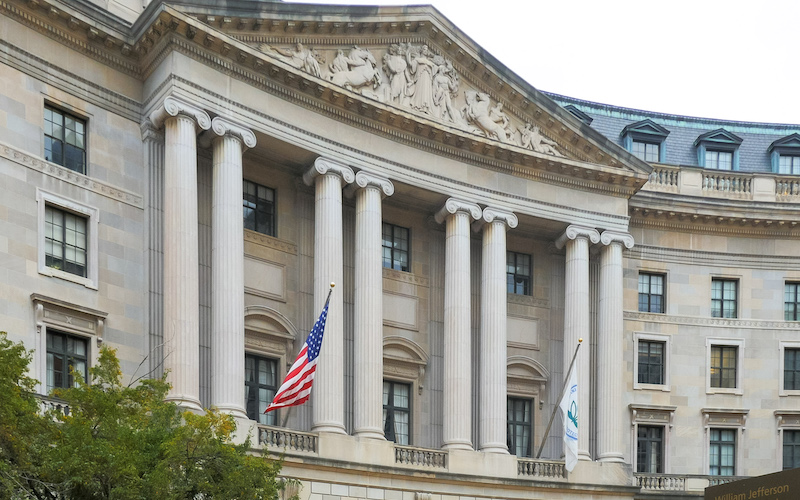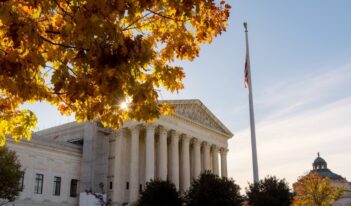
A proposed rule to speed up administrative decision-making could have unintended consequences.
The U.S. Environmental Protection Agency (EPA) recently proposed a rule to streamline the process for appealing a permit to the agency’s Environmental Appeals Board (EAB).
The EAB is an appellate tribunal within EPA that hears administrative appeals of permit decisions under the EPA-administered environmental statutes. Due to the doctrine of exhaustion of administrative remedies, a permit applicant cannot appeal an adverse permit decision to a federal court until it first appeals the decision to the EAB. Parties sometimes spend years navigating the permit appeal process, expending time and resources along the way.
The new rule proposes a variety of mechanisms that would likely speed up the permit appeal process. For example, the main focus of the proposed rule is to create an alternative dispute resolution (ADR) program that is opt-out, unlike the existing program that is opt-in, with the goal of more quickly resolving disputes. Another example is the proposed requirement that EAB issues a final decision within 60 days after briefs are filed and oral arguments are complete.
But two of the proposed changes—a proposed reduction of the EAB’s scope of review and the elimination of amicus curiae participation—are unlikely to speed up the permit appeal process and could result in unintended consequences.
Under current regulations, a party must demonstrate to the EAB that its challenge to a permit is based on a “finding of fact or conclusion of law that is clearly erroneous” or an “exercise of discretion or an important policy consideration that the Environmental Appeals Board should, in its discretion, review.” In other words, the EAB can review permit decisions if a party disagrees with EPA’s policy or its exercise of discretion.
In its proposed rule, EPA writes that the current standard “has led to some confusion as to whether a petitioner may ask the EAB—standing in the Administrator’s shoes—to address issues that a federal court generally could not review, such as whether EPA properly exercised its discretion relative to an ‘important policy consideration.’” The agency therefore proposes to eliminate a petitioner’s ability to challenge a permit based on “an exercise of discretion” or “an important policy consideration.”
Under the Administrative Procedure Act, although the scope of review under the “arbitrary and capricious” standard is narrow, federal courts can still consider if the agency made a decision based on relevant factors or whether there was a clear error of judgment. In other words, federal courts can review discretionary policy decisions when agencies fail to demonstrate these decisions were “the product of reasoned decisionmaking.” In federal court, even if the agency relied on a fact that is not erroneous, a federal court could strike down a permit decision if that fact has no rational connection to the permit decision and the agency can show no other reason for the decision.
EPA’s existing regulations appear to give the EAB a broader scope of review than federal courts because those regulations allow the EAB to review a permit decision if a party disagrees with the agency’s policy. But the proposed rule would give the EAB a narrower scope of review than federal courts because the board will only be able to overturn a permit decision if the facts or legal conclusions the agency relied on are clearly erroneous. Yet if the EAB is effective at correcting legal errors before they get to a federal court, it makes sense to give the EAB the same scope of review as a federal judge.
Allowing the EAB to review permit decisions for potential abuses of discretion also gives the agency a chance to toss out permit decisions that might be overturned by a federal judge and to issue final permits that are more legally defensible. This would lead to less litigation in federal court, saving time and money in the long run.
Since the language of the current regulations is confusing, EPA should instead modify the language to give the EAB the ability to review permit decisions that are arbitrary, capricious, or an abuse of discretion, and remove the language that allows it to review “important policy considerations.”
EPA also proposes to eliminate amicus curiae participation in permit appeals. Under the proposed rule, any private party that fulfills the procedural requirements, such as filing comments on the proposed draft permit, would still be able to file a dispute with the EAB. Non-parties, however, will not be able to submit an amicus brief. EPA argues that the ADR process is the best forum to resolve disputes rather than an amicus curiae process. But the agency does not explain why these two processes should be thought of as mutually exclusive.
The agency argues that eliminating amicus briefs will speed up the permit appeal process. But eliminating amicus curiae participation will not necessarily reduce the length of time it takes the agency to issue a final permit decision. The agency contends that this elimination would cut 15 days off the appeal process since amicus briefs can be filed up to 15 days after response briefs are filed. An EAB judge, however, could issue a final decision within the proposed 60-day deadline after briefs are filed and still find time to consider amicus briefs within the remaining 45 days.
It is also not obvious that amicus curiae participation has led to an influx of briefs that have sapped the EAB’s resources. A review of disputes filed with the EAB since 2016 identified only three disputed permits that were accompanied by amicus briefs. This could mean that amicus briefs have not generally led to an increased workload for EAB judges, or it might mean that the tool will not be missed by most interested parties.
Still, the proposed elimination of non-party amicus briefs could also limit information used to write permits. Some trade associations oppose the proposed prohibition on amicus curiae participation because these “friend-of-the-court” briefs can supply important technical information that can shape future permits.
Furthermore, the proposed rule’s restriction on amicus participation could lead to other unintended consequences.
For example, the restriction might encourage a party that otherwise would not dispute a permit to file a dispute out of fear of being excluded from the appeal process. Imagine a party, such as a non-profit organization representing a community, that is satisfied with the terms of a permit and decides it would not be worth expending resources to litigate over the terms. This organization, however, finds out 29 days after the regional administrator issued the permit decision that the permit applicant filed a petition with the EAB. At this point, the non-profit organization cannot participate in the appeal process as amicus and must trust that its public comments in the permit record will sufficiently represent its perspective.
This example shows how entities may be motivated to file more initial petitions for fear of being shut out of the appeal process later on—thereby expending time and resources pushing for more favorable permit terms.
As an alternative to eliminating amicus curiae participation, some environmental organizations suggest limiting such participation to entities that exhaust administrative requirements, such as the requirement to file a public comment, or where the EAB specifically requests amicus curiae participation because it needs information on a relevant issue not brought to its attention by the parties.
EPA should give the EAB the ability to consider amicus briefs to the extent that they provide useful information or resolve issues that might otherwise result in later litigation.
EPA’s proposed rule includes a variety of procedural changes that are expected to speed up the permit appeal process. Two of the changes that the proposed rule would make, however, are unlikely to speed up the permit appeal process and could lead to unintended consequences. Although creating a fast track to final agency permit decisions is an admirable goal, this accelerated process has trade-offs that deserve careful consideration.




